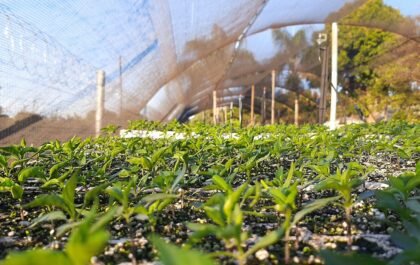Welcome to the captivating realm of animals, where survival is an art and adaptations are nothing short of extraordinary. From the arid deserts to lush rainforests, every creature has its own remarkable story. Have you ever wondered how a chameleon blends seamlessly into its surroundings? Or how certain species manage to thrive despite their dwindling populations? The animal kingdom is teeming with astonishing strategies for survival that leave us in awe.
Join us as we embark on a journey through fascinating adaptations, intricate predator-prey relationships, surprising intelligence hidden behind those adorable faces, and the tireless efforts dedicated to conservation. Every section unveils something new about these magnificent beings who share our planet. Get ready to explore the wonders of wildlife like never before!
The Fascinating World of Animal Adaptations: How Different Species Survive and Thrive
Animal adaptations are nature’s way of showcasing ingenuity. Take the arctic fox, for instance. Its thick fur changes color with the seasons, providing camouflage against snow in winter and tundra in summer.
Consider also the giraffe’s long neck. It evolved to reach high foliage, allowing it to feast on leaves that other herbivores can’t access. This unique trait not only aids its survival but also minimizes competition.
Then there’s the mimic octopus, a master of disguise. By imitating more than fifteen different species—like lionfish and flatfish—it evades predators effortlessly.
These adaptations highlight how diverse environments shape behaviors and physical traits over generations. Each species adapts uniquely to thrive within its niche, proving that survival often depends on innovation and resilience in nature’s ever-changing landscape.
From Predator to Prey: The Intricate Balance of Life in the Animal Kingdom
The animal kingdom is a dynamic web of relationships. Predators and prey exist in a delicate dance, shaping ecosystems across the globe.
Take the wolf, for instance. A masterful hunter, it relies on speed and teamwork to catch its meal. Yet even wolves find themselves vulnerable when faced with habitat loss or dwindling food sources.
Conversely, consider the deer—graceful and cautious. While they skillfully evade predators through keen senses, their survival hinges on available shelter and forage.
This shifting balance creates a tapestry of life where roles can change dramatically due to environmental shifts or human impact. When one species thrives too much or declines sharply, it ripples through the ecosystem, affecting countless others.
Each interaction teaches us about resilience and adaptation in an ever-evolving world filled with surprises at every turn.
Going Beyond Cute and Cuddly: Exploring the Surprising Intelligence of Animals
When we think of animal intelligence, adorable kittens and playful puppies often come to mind. Yet, the animal kingdom holds many surprises beyond these familiar faces.
Consider the octopus. This remarkable cephalopod showcases problem-solving skills that rival those of some mammals. They can open jars and escape enclosures with ease. Their complex behaviors hint at a level of cognitive ability that continues to intrigue researchers.
Then there are elephants, known for their emotional depth and social structures. These gentle giants demonstrate empathy by mourning deceased companions. Such profound connections reveal an understanding far deeper than mere survival instincts.
Even birds like crows and parrots exhibit extraordinary mental capabilities. Crows can craft tools while parrots mimic human speech with impressive accuracy, showcasing their adaptability in various environments.
Each species contributes uniquely to our understanding of intelligence in the wild—proving there’s so much more beneath the surface than meets the eye.
Endangered but Not Forgotten: A Look at Conservation Efforts for Vulnerable Animal Species
The plight of endangered species is a pressing issue that demands our attention. Numerous animals across the globe face threats from habitat destruction, poaching, and climate change. Organizations dedicated to conservation work tirelessly to mitigate these risks.
Initiatives like wildlife reserves and breeding programs are making significant strides. These efforts aim not only to protect vulnerable species but also to restore their natural habitats. By fostering biodiversity, we can help maintain ecosystem balance.
Community involvement plays a crucial role in conservation success. Local populations often become guardians of their environment when they understand its value. Education and awareness campaigns further empower individuals to take action for wildlife protection.
Technology is also changing the game in conservation efforts. Tools such as GPS tracking and drones enable researchers to monitor animal populations more effectively than ever before. This data-driven approach allows for targeted interventions where they’re needed most.
While challenges remain formidable, there’s hope on the horizon for many at-risk species. With continued support from communities worldwide, endangered animals may have a fighting chance at survival in their natural habitats once again.
























